The Hoosac Tunnel
Today, a tunnel in the woods. The University of Houston's College of Engineering presents this series about the machines that make our civilization run, and the people whose ingenuity created them.
We're in North Adams, Massachusetts. The Hoosac Tunnel should be nearby, but where? The few local people who know give odd directions: "Drive past the hairpin turn, take the steep road downhill, go left at the river, get out at the bridge, and walk a ways." This piece of American history is no tourist attraction.
The Tunnel solved a 19th century trade problem: The Erie Canal carried goods from the west to Troy, New York. From there, it was an easy trip down the Hudson to New York City. Getting goods to eastern New England's industries was another matter. The towering Hoosac Mountain, just east of North Adams, blocked the path.
A Hoosac canal tunnel was proposed in 1819, even before the Erie Canal was finished and before America had seen her first locomotive. By 1848, we had built a large rail system, so now a company was formed to tunnel under the mountain. By now, a clumsy rail system wound through the mountains further south, but operating it was costly. The company expected its tunnel to cost under a million dollars.
In 1852 they began cutting what should've been the world's long-est rail tunnel, but countless troubles slowed progress. I'd leave you glassy-eyed if I recited all the false starts, mismanagement, cost overruns, and accidents that delayed its completion for 25 years. They say 195 lives were lost. That may be an exaggeration, but it was still appallingly dangerous work. And, in the end, it cost around twenty million dollars (about three-hundred million of our dollars) for a tunnel 4-3/4 miles long.
The underlying problem was that the right tools for the job didn't yet exist. So, while political and economic wars raged, the tunnel itself steadily drove the evolution of tunneling technology.
Workers went at the hard quartz and schist on the east side with a steam-drill system. That was replaced with compressed air drills. Finally, trinitroglycerin was invented -- much cleaner, safer and more powerful than other blasting agents -- and it sped things up. A new ventilation system was invented, along with better means for shoring up the tunnel in soft fluid soil. A brick factory had to be built on the west side to provide lining for that part of the tunnel.
So we find our way down to the east portal on this lovely day in the woods. We ask a man by the Deerfield River where the tunnel is. "Two hundred yards to your left," he says. Sure enough, there a cave leads into the dense forest around it. A single track now emerges from it. The original double track worked for the smaller trains of 1877, but trains are larger now. The man by the river, Hoosac Tunnel expert Jerry Kelly, points to a mountaintop where he's set a flag on the tunnel survey reference point. (The tunnel is nearly a perfect horizontal line, but its center is 60 feet higher for drainage.)
So we go away wondering who'd believe that this impossibly bucolic scene holds a vast engineering test-laboratory -- one that taught the world, while it almost bankrupted Massachusetts.
I'm John Lienhard, at the University of Houston, where we're interested in the way inventive minds work.
D. Jacobs and A. E. Neville, Bridges, Canals & Tunnels. (New York: van Nostrand, Co. 1968): pp. 40-51.
D Macaulay, Building Big. (Boston: Houghton Mifflin Co., 2000): pp. 60-67.
My thanks to Jerry Kelly for his on-site counsel and his fine Hoosac Tunnel website, http://www.jkrails.net/
Additional online sources include,
http://www.boudillion.com/hoosac/hoosac.htm
http://www.catskillarchive.com/rrextra/htpage.Html
Below are several of my photos of the tunnel as it appears today
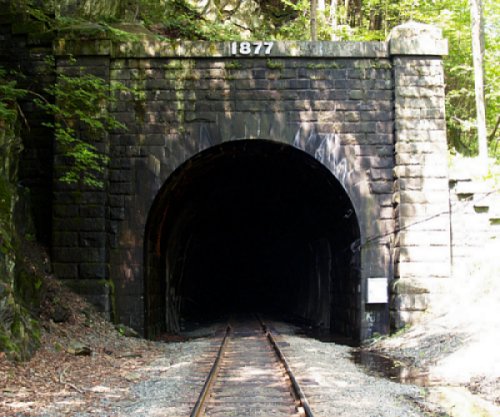
The east portal to the Hoosac Tunnel
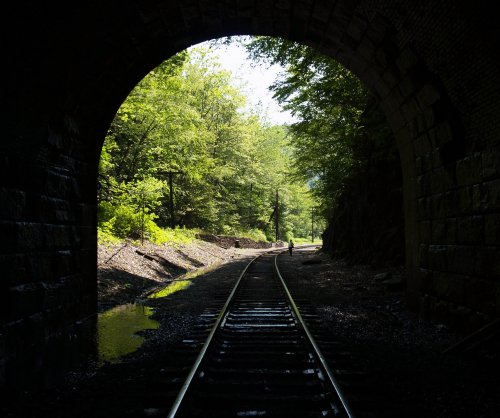
Looking eastward from the east portal to the Hoosac Tunnel
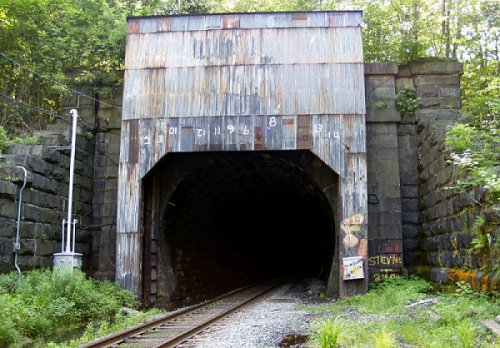
The West portal to the Hoosac Tunnel
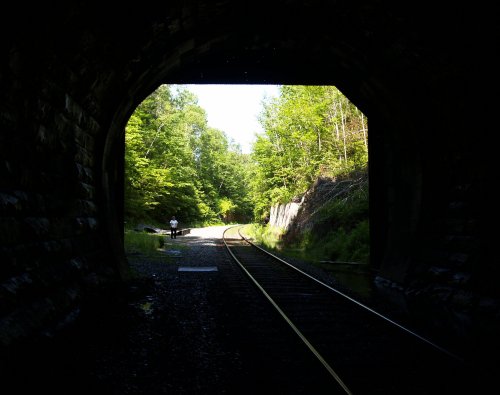
Looking westward from the west portal of the Hoosac Tunnel
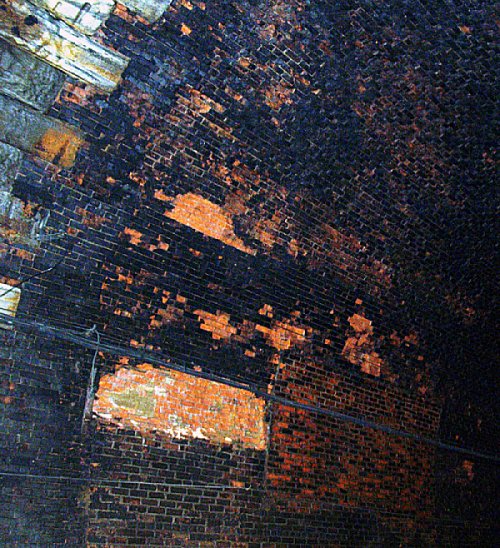
The inner layer of between five and eight courses of brickwork used to shore up a long portion of the Hoosac Tunnel on its west end.